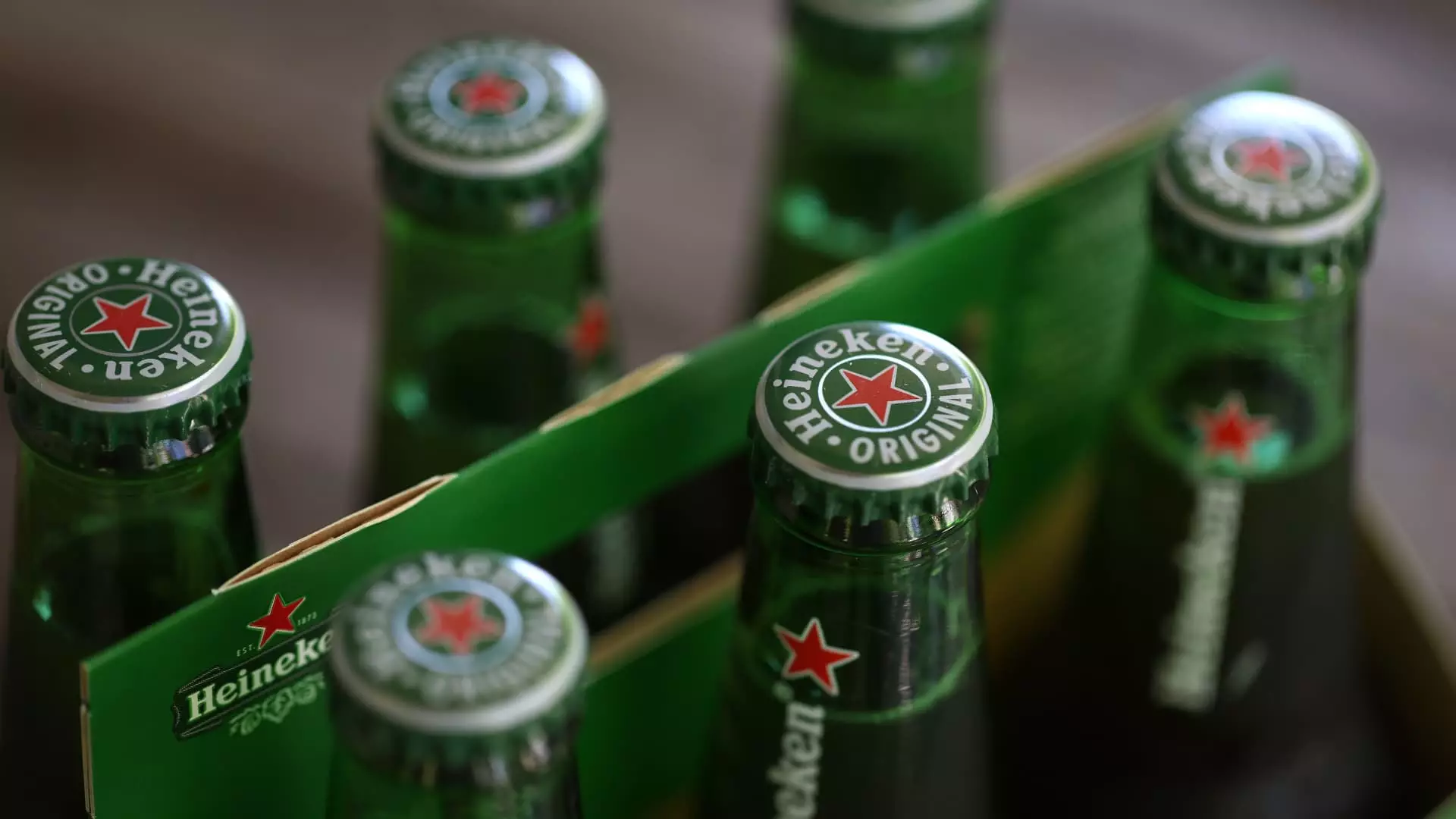Heineken, a brewing giant, experienced a nearly 7% drop in its shares after reporting weaker-than-expected first-half profit growth. The company’s operating profit of 12.5% fell short of the consensus forecast of 13.2%, resulting in a decline in stock value. Beer sales increased by only 2.1%, missing the projected growth rate of 3.4%. Additionally, Heineken suffered a net loss of 95 million euro due to a non-cash impairment of 874 million euro on its investment in Chinese brewing firm CR Beer.
The market responded negatively to Heineken’s results, with shares trading down 7.9% at the time of the announcement. Despite the disappointing figures, Heineken’s CEO, Dolf van den Brink, expressed satisfaction with the company’s performance in the first half. He highlighted the volume growth as “balanced and broad-based” across the global footprint, with a notable 5% increase in premium products. However, the company revised its operating profit growth forecast for the year to a range of 4% to 8%, indicating challenges ahead.
Analysts raised concerns about the discrepancy between Heineken’s messaging and market expectations. The company’s performance fell short of forecasts, particularly in Europe, where profit growth was significantly lower than anticipated. Increased promotional spending in a competitive market was cited as a key reason for the underperformance. Barclays analysts emphasized the need to bridge the gap between Heineken’s communication with investors and actual results to avoid further disappointments.
Heineken highlighted its success in low and no-alcohol beer sales, with Heineken 0.0 experiencing a 14% growth. The company consolidated its leadership in this category, which showed double-digit growth in several key markets. Van den Brink acknowledged the importance of low and no-alcohol products, emphasizing the growth potential of this segment. Market research suggests that this category is poised to outgrow the broader alcohol industry, making it a strategic focus for established brands seeking growth opportunities.
Van den Brink mentioned that input cost pressures had eased for Heineken, particularly in Europe and the Americas. This development allowed the company to minimize pricing adjustments and focus on driving revenue growth through volume and pricing strategies. The CEO’s comments indicate a deliberate effort to rebalance Heineken’s revenue streams and enhance profitability in a competitive market environment.
Heineken’s recent financial results reflect a mixed performance with areas of strength and areas of concern. The company’s ability to address market challenges, capitalize on growth opportunities in the low and no-alcohol segment, and optimize cost structures will be crucial in shaping its future performance. The need for clear communication with investors and aligning market expectations with operational reality is essential for Heineken to regain investor confidence and drive sustainable growth in the long term.

